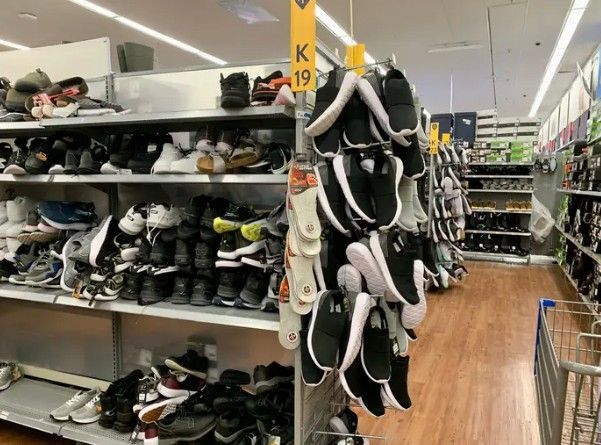News & Updates

By Steven Beadles
•
July 1, 2025
Summer 2025 has brought scorching temperatures and early back-to-school resets. In response, retailers across the country are accelerating the liquidation of seasonal merchandise. That’s where the Allen R. Klein Company, a national leader in closeouts and inventory solutions, steps in to help businesses minimize markdowns and protect margins. Timing and strategy have never been more important. Based on Allen R. Klein’s 40-plus years of experience in the industry, he knows historically that if summer goods sit past July, their value can drop by 30 to 50 percent in most channels. Klein is the President of Allen R. Klein Company, a firm specializing in closeouts and liquidation strategies for national retailers. “That’s when we jump in,” says Klein. “Helping clients move product before the markdown spiral begins is where we add the most value.” Retailers Are Running Out the Clock Retailers typically begin summer clearance markdowns in late July or early August. But this year, that schedule has shifted. According to CivicScience, nearly half of U.S. adults began back-to-school shopping by early July — much earlier than in previous years. One major reason is the evolution of the school calendar. Decades ago, most schools across the U.S. began classes after Labor Day. Today, it is standard for grades 1 through 12 to return by mid-August, with many districts starting as early as the second week of the month. This shift has shortened the summer retail window nationwide, leaving retailers with less time to sell through seasonal goods before demand fades. Smart Tactics the Allen R. Klein Company Recommends Bundle Products to Drive Value Bundling slow-moving items like beach towels with sunscreen or flip-flops with tote bags enhances perceived value and helps clear shelf space more efficiently. Research from Lightspeed Commerce shows bundling can increase both average transaction size and sell-through rate. “If you pair two underperformers into one compelling deal, it’s more likely to move and quickly,” says Klein. Price Deeply and Decisively In the liquidation market, sliding-scale markdowns rarely succeed. Buyers — especially those operating on tight margins and limited shelf space — look for steep, upfront value. Liquidators often require pricing at 70 to 80 percent off wholesale, depending on product dating and resale potential. “Buyers don’t have time to track multiple offers or wait for gradual discounts,” Klein explains. “You have one shot to catch their attention. Price is what gets them to pull the trigger.” Reallocate Inventory Regionally Retailers are increasingly using real-time sales data and weather trends to guide where clearance inventory should be sent. Reports from replenishment platforms like EasyReplenish show that redistributing products by region before mid-summer helps reduce markdown losses significantly. “One-size-fits-all clearance doesn’t work anymore,” Klein adds. “We help clients move the right inventory to the right region at the right time.” A Real-World Approach That Preserves Margin Retailers who act early are seeing stronger results. Allen R. Klein Company has worked with multiple national clients this summer to help them clear seasonal inventory efficiently. In some cases, the majority of product was moved within weeks of markdown launch. “When we start working with clients early in the season and apply smart bundling and pricing strategies, they’re able to preserve significantly more margin and avoid costly warehousing,” Klein says. While each case varies, Klein emphasizes that retailers who prepare in advance for seasonal transitions are better positioned to hit their next sales cycle clean and strong. The Clock Is Ticking Back-to-school shopping is already in high gear. The National Retail Federation projects spending in this category to top $86 billion this year, a 9 percent increase over 2024. That demand shortens the summer sell-through period even further. At the same time, warehouse space remains tight and freight costs continue to rise. Retailers are finding it more expensive to hold onto seasonal goods. Many are recognizing that liquidation is not just a fallback plan but an essential part of inventory strategy. What Sets Allen R. Klein Company Apart Liquidation is a fast-moving, often unpredictable business, and not all players operate on equal footing. What sets Allen R. Klein Company apart is more than just its scale — it’s trust. With over four decades in the industry, Allen R. Klein has built one of the most extensive and reliable buyer networks in the business, spanning national retailers, off-price chains, regional distributors, and international export channels. But it's not just about reach — it's about credibility. “In this business, your word is everything,” says Klein. “There are a lot of shady operators out there. But after 40 years of doing things the right way, buyers know they can trust us.” That trust translates into faster transactions, stronger deal flow, and long-term relationships that benefit both buyers and sellers. Clients don’t just move product — they protect their brand reputation while doing it. Allen R. Klein Company’s Summer Clearance Checklist Start markdowns while demand is still strong Bundle slower-moving SKUs to improve perceived value Use regional data to guide inventory reallocation Work with experienced liquidators to maximize recovery value Final Word “Liquidation for summer isn’t just cleanup,” says Klein. “It’s a strategic opportunity. Execute early, package smart, and time it right.” Retailers who take action now are protecting margins and clearing space for the next sales cycle. Those who delay may be left with deeper markdowns and more risk heading into August. Looking to move seasonal inventory or reduce overstock? Contact the Allen R. Klein Company today and learn how we help businesses across the country turn surplus into opportunity.

By Steven Beadles
•
May 1, 2025
As tariffs, supply chain disruptions, and store closures reshape retail in 2025, liquidation firms like Allen R. Klein Company are becoming vital partners. Learn how smart inventory strategies are helping businesses adapt and thrive — from Rite Aid’s exit to Big Lots’ resurgence.

5 Key Considerations When Choosing a Partner for Selling Excess Inventory, Liquidation, or Closeouts
By Steven Beadles
•
March 8, 2025
Maximizing Return Without Compromising Brand Integrity

By Steven Beadles
•
March 4, 2025
How to Maximize Profits on Excess Inventory Without Hurting Your Brand For manufacturers and retailers, excess inventory is an inevitable part of business. Whether due to overproduction, seasonal changes, or packaging updates, surplus stock can quickly become a burden. However, liquidating this inventory doesn’t have to mean sacrificing brand value or profitability. With the right strategies, businesses can turn excess inventory into an opportunity while protecting their reputation. 1. Work with a Reputable Closeout Partner One of the biggest risks in inventory liquidation is selling to the wrong buyers. A reputable closeout distributor, like Allen R. Klein Company, ensures that your products reach appropriate secondary markets without competing with your primary sales channels. This prevents brand devaluation and maintains customer trust. 2. Set the Right Pricing Strategy Liquidating inventory doesn’t mean giving it away. Setting competitive but profitable pricing is key. Factors to consider: Market demand – Even closeout items have value; research what similar products are selling for in discount markets. Retailer restrictions – Some liquidation buyers may require pricing adjustments to match their store’s pricing structure. Bulk deals – Offering tiered pricing for larger orders can help move inventory faster while maintaining margins. 3. Maintain Discretion and Control Some businesses worry that closeout sales will impact their premium brand image. To avoid this: Sell through channels that do not advertise the brand (such as certain discount retailers or overseas markets). Implement geographic or customer restrictions to prevent competition with your regular distribution. Use alternative packaging if needed to differentiate from regular retail stock. 4. Optimize Timing for Maximum Returns Timing can make a huge difference in liquidation revenue. Act early – Holding onto excess inventory too long often results in depreciation or obsolescence. Target seasonal demand – Some surplus items may still sell at a premium during holiday seasons or market trends. Watch for industry shifts – A change in regulations or consumer habits can either increase or decrease the value of surplus stock. 5. Consider Alternative Marketplaces Beyond traditional liquidation buyers, there are additional avenues to explore: Discount stores and dollar stores – Great for moving high volumes quickly. Charitable organizations and non-profits – Some businesses prefer to donate excess inventory for tax benefits. International markets – Some surplus products may have higher demand in overseas markets than domestically. Final Thoughts Excess inventory doesn’t have to be a loss for your business. By working with a trusted liquidation partner, setting the right pricing strategy, and being strategic about where and when to sell, you can maximize profits while protecting your brand integrity. If you need a reliable and discreet liquidation partner, Allen R. Klein Company is here to help. Contact us today to explore your options!






